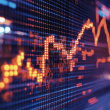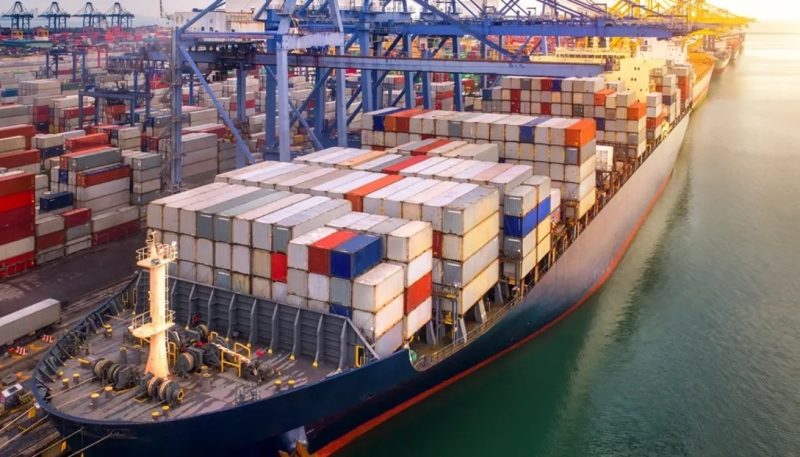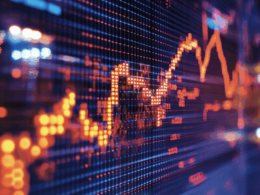by Dina Ting, CFA, Head of Global Index Portfolio Management, Franklin Templeton
In these days of waning US-centric investment, some investors are betting that Trump’s tariff rhetoric may not translate into action, while others pursue strategies tilted toward industrials-heavy nations that may be benefiting from increased defense spending. Either way, the tide turned decidedly global during the first half of 2025.
In this current economic environment, we see dispersions in both sensitivities to tariff impacts across different markets and returns. Here, we highlight some unique dynamics and vulnerabilities that may influence global markets over the latter half of the year.
Market Returns for Major Economies
Year-to-Date as of June 2, 2025

Source: Bloomberg, in US dollar terms. Germany – DAX = The DAX is a stock market index consisting of the 40 major German blue chip companies trading on the Frankfurt Stock Exchange. It is a total return index. Prices are taken from the Xetra trading venue. Mexico – MEXBOL = The S&P/BMV IPC, or MEXBOL, seeks to measure the performance of the largest and most liquid stocks listed on the Bolsa Mexicana de Valores. The index is designed to provide a broad, representative, yet easily replicable index covering the Mexican equities market. The constituents are weighted by modified market cap subject to diversification requirements. Eurozone – EURO STOXX 50 = The EURO STOXX 50 is a stock index of eurozone stocks designed by STOXX, an index provider owned by the Deutsche Börse Group. The index is composed of 50 stocks from 11 countries in the Eurozone. EURO STOXX 50 represents eurozone blue-chip companies considered as leaders in their respective sectors. Brazil – BOVESPA = The Bovespa Index, best known as Ibovespa, is the benchmark index of about 86 stocks traded on the Brazil Stock Exchange and Over-the-Counter Market, accounting for the majority of trading and market capitalization in the Brazilian stock market. It is a weighted-measurement index. South Korea – KOSPI = The Korea Composite Stock Price Index or KOSPI is the index of all common stocks traded on the Stock Market Division—previously, Korea Stock Exchange—of the Korea Exchange. United States – S&P 500 Index. Indexes are unmanaged and one cannot directly invest in them. They do not include fees, expenses or sales charges. Past performance is not an indicator or a guarantee of future performance. See www.franklintempletondatasources.com for additional data provider information.
Diversification vs. tariff sensitivity
Building upon lessons from the Russia-Ukraine war, the United Kingdom recently unveiled plans to significantly raise defense spending and accelerate the development of next-generation security capabilities.
The notable rise tracks the trend we’ve seen in military expenditure across the globe, which reached US$2.7 trillion last year—an increase of 9.4% in real terms from 2023.1 We believe this localization of defense production should continue to spur job growth and revitalize smaller industrial centers.
South Korea’s market has also been lifted given its recent aerospace and defense company gains resulting from global expansion moves and expectations for increased orders on higher European defense spending. A leading South Korean aerospace company formalized its plan to establish a production base in Germany in addition to pursuing other projects in Poland, Romania and Canada, as it moves to strengthen its leadership in the sector.
To date this year, South Korea’s market saw exchange-traded fund (ETF) net inflows rise more than 121%2—higher than any other major Asian economy for the period. It has also widely outperformed the US market year-to-date, returning 21.3% as measured by the KOSPI Index (versus 1.1% for the S&P 500 Index).3 We are optimistic that the recent landslide victory by South Korea’s new president Lee Jae-myung can usher in a long-awaited political normalization for Seoul following months of political crisis stemming from the impeachment of the country’s former leader in December.
Eurozone/Germany
For the second half of the year, we foresee ongoing opportunities in Germany and the eurozone, which offer differentiated sector allocation compared to the tech-heavy S&P 500 Index. By contrast, Germany’s information technology (IT) sector is its third largest. Similarly, the Stoxx Europe 600 Index holds top weightings in financials (approximately 23%) and industrials (approximately 19%) firms, with IT making up just 7% of the index.4
Europe’s stock market got an early boost in March when German officials proposed spending hundreds of billions of euros on infrastructure and defense, a notable departure from Berlin’s reputation for fiscal austerity. In a significant turnaround for the long-sluggish market, the Stoxx 600 Index outpaced the S&P 500 by about 20 percentage points in US dollar (USD) terms at the end of May.
Moreover, the US administration is considering taxing foreign owners of US assets from countries with “unfair” tax practices, a move that could potentially discourage capital inflows and weaken the USD. This is leading investors to reassess their dollar exposure, particularly after April’s simultaneous selloff in US stocks, bonds and USD, which revealed reduced diversification benefits. We believe a stronger euro, resilient corporate earnings and attractive valuations are making the region increasingly appealing, drawing investor attention back to the eurozone.
Year-to-date, ETFs focused on the Europe region drew net flows of US$33billion, bringing total net inflows to US$238.97 billion.5 Net ETF inflows have risen 19% year-to-date. We expect the upcoming NATO summit to shed more light on future defense spending and are optimistic that related fiscal reforms can continue to boost growth. Germany’s proposed infrastructure spending alone, by some estimates, may raise economic output by more than two percentage points per year over the next decade.
Such comprehensive reforms stand to benefit not only its defense sector but the overall economy by stimulating job growth and key development areas such as manufacturing, green technology and digital infrastructure.
Titans of Latin America: Mexico and Brazil
Notwithstanding the current uncertainties over tariffs facing steel industry exports to the United States, we believe Mexico should continue to benefit by capturing a disproportionate share of nearshoring opportunities.
Whether President Trump can justify his tariff policy in the courts remains to be seen, and steel duties facing Brazil and Mexico pose key risks, in our opinion. Mexico is also coping with a marked decline in remittances—a significant component to its economy—which recently registered their largest annual drop in more than a decade as US lawmakers mull taxing the transfers and continue with crackdowns on immigration.
Last year, Mexico received nearly US$65 billion in remittances, or roughly 3.5% of its gross domestic product (GDP). An extended decline could affect consumption in Latin America’s second-largest economy.
Mexico’s stock market, however, is heavily weighted toward sectors like consumer staples and communication services, known for their stable cash flows and reliable dividends, offering some resilience in uncertain times. In our analysis, valuations also appear attractive compared to historical averages: Over the past five years, the average 12-month adjusted price-to-earnings ratio for Mexican stocks was approximately 19x. Currently, the S&P/BMV Total Mexico Index is trading at 12.6x, based on forward earnings estimates.6
Brazil
As companies continue to pivot to a “China plus” strategy—maintaining operations in China while expanding production elsewhere—we believe Brazil may also be poised to benefit. China, Brazil’s largest trading partner, is already shifting further demand for agricultural goods to Brazil, which was spared more of a direct hit in the tariff war as the country faces the lowest level of reciprocal US tariffs.
President Luiz Inácio Lula da Silva’s (Lula’s) recent visit to Beijing resulted in planned investments and agreements of about US$4.8 billion, underscoring Brazil’s growing economic ties with China. Despite the country’s current fiscal challenges, we believe Brazil’s strategic positioning as a key commodity exporter, particularly in soybean and meat, should bode well for its economic growth.
During the second half of this year, politics should weigh more heavily on Brazil’s market with next year’s presidential election coming into clearer focus. Given Lula’s low approval ratings, concerns over his health (emergency brain surgeries and chemotherapy treatments) and age (81), there is speculation that fresh candidates may emerge and increase the potential for markets to react positively to any signs of change.
Over the near-term, we’ll be keeping close tabs on the divergence of each country and region’s unique characteristics as they highlight the varying opportunities and risks, especially amid Trump’s particular approach to reciprocal policymaking and underscore the need for more nuanced investment strategies.
*****
Endnotes
- Source: “Unprecedented rise in global military expenditure as European and Middle East spending surges.” Stockholm International Peace Research Institute. April 28, 2025.
- Source: Bloomberg, as of June 3, 2025.
- Source: Bloomberg, returns as of May 31, 2025. Global net flows as of June 2, 2025. The Korea Composite Stock Price Index or KOSPI is the index of all common stocks traded on the Stock Market Division—previously, Korea Stock Exchange—of the Korea Exchange. Indexes are unmanaged and one cannot directly invest in them. They do not include fees, expenses or sales charges. Past performance is not an indicator or a guarantee of future performance. See www.franklintempletondatasources.com for additional data provider information.
- Source: Bloomberg, as of June 4, 2025. The STOXX Europe 600, also called STOXX 600, SXXP, is a stock index of European stocks designed by STOXX Ltd. Indexes are unmanaged and one cannot directly invest in them. They do not include fees, expenses or sales charges. Past performance is not an indicator or a guarantee of future performance. See www.franklintempletondatasources.com for additional data provider information.
- Source: Bloomberg, as of June 3, 2025.
- Source: Bloomberg, as of June 3, 2025. Based on adjusted P/E ratio for the S&P/BMV Total Mexico Index. The S&P/BMV Total Mexico Index is designed to serve as a broad benchmark for the Mexican equities market. Indexes are unmanaged and one cannot directly invest in them. They do not include fees, expenses or sales charges. Past performance is not an indicator or a guarantee of future performance. See www.franklintempletondatasources.com for additional data provider information.
WHAT ARE THE RISKS?
All investments involve risks, including possible loss of principal.
Equity securities are subject to price fluctuation and possible loss of principal. Small- and mid-cap stocks involve greater risks and volatility than large-cap stocks.
International investments are subject to special risks, including currency fluctuations and social, economic and political uncertainties, which could increase volatility. These risks are magnified in emerging markets. Investments in companies in a specific country or region may experience greater volatility than those that are more broadly diversified geographically. The government’s participation in the economy is still high and, therefore, investments in China will be subject to larger regulatory risk levels compared to many other countries.
Diversification does not guarantee a profit or protect against a loss.
ETFs trade like stocks, fluctuate in market value and may trade above or below the ETF’s net asset value. Brokerage commissions and ETF expenses will reduce returns. ETF shares may be bought or sold throughout the day at their market price on the exchange on which they are listed. However, there can be no guarantee that an active trading market for ETF shares will be developed or maintained or that their listing will continue or remain unchanged. While the shares of ETFs are tradable on secondary markets, they may not readily trade in all market conditions and may trade at significant discounts in periods of market stress.
WF: 5492855
Copyright © Franklin Templeton















